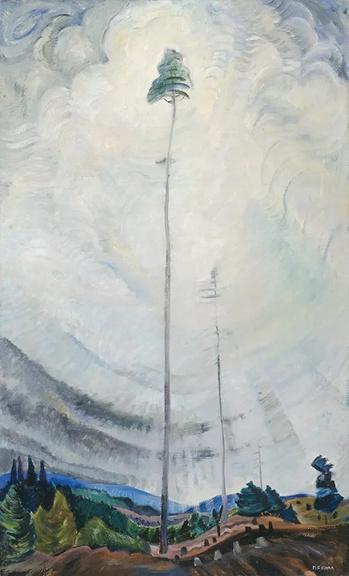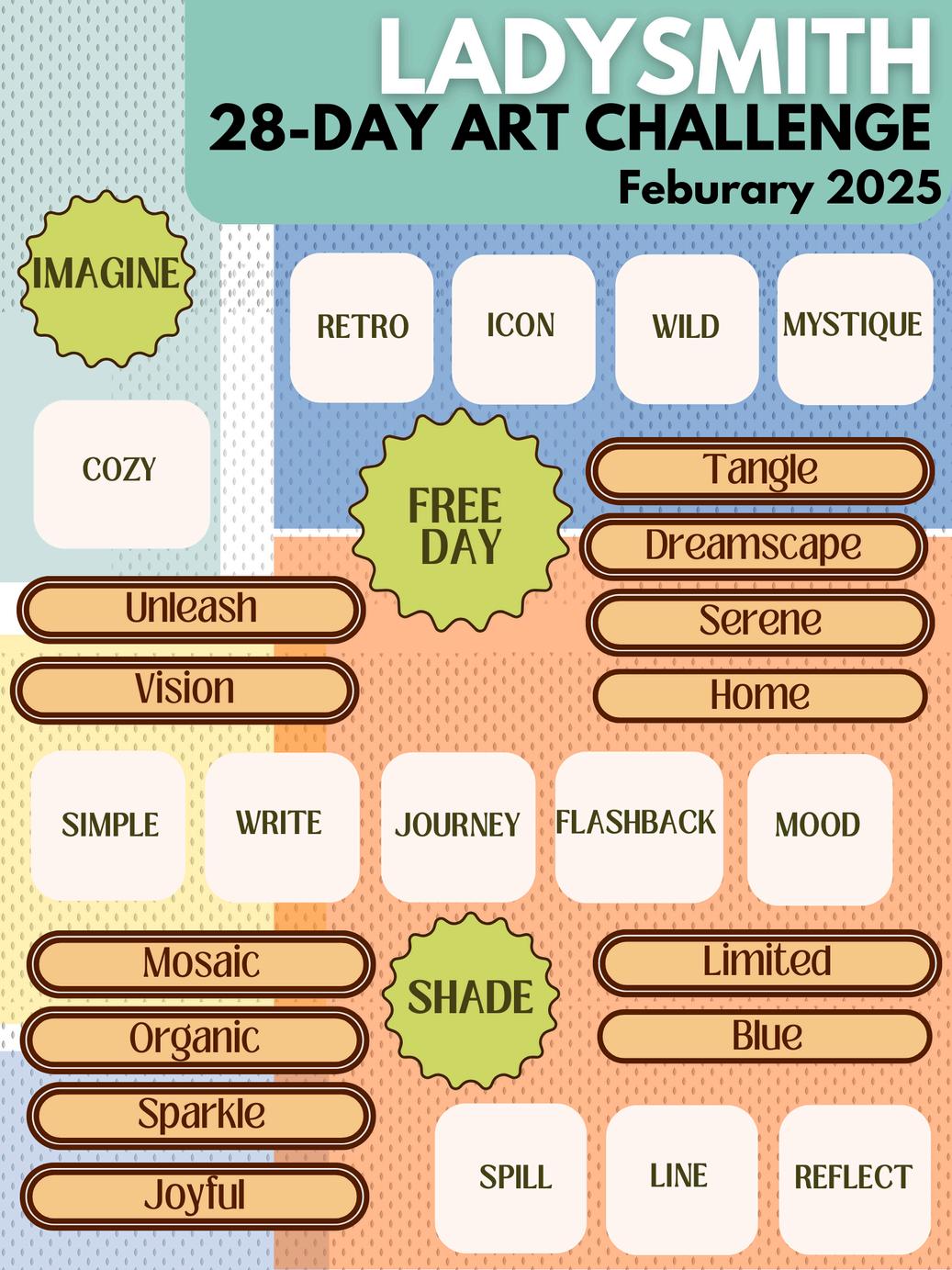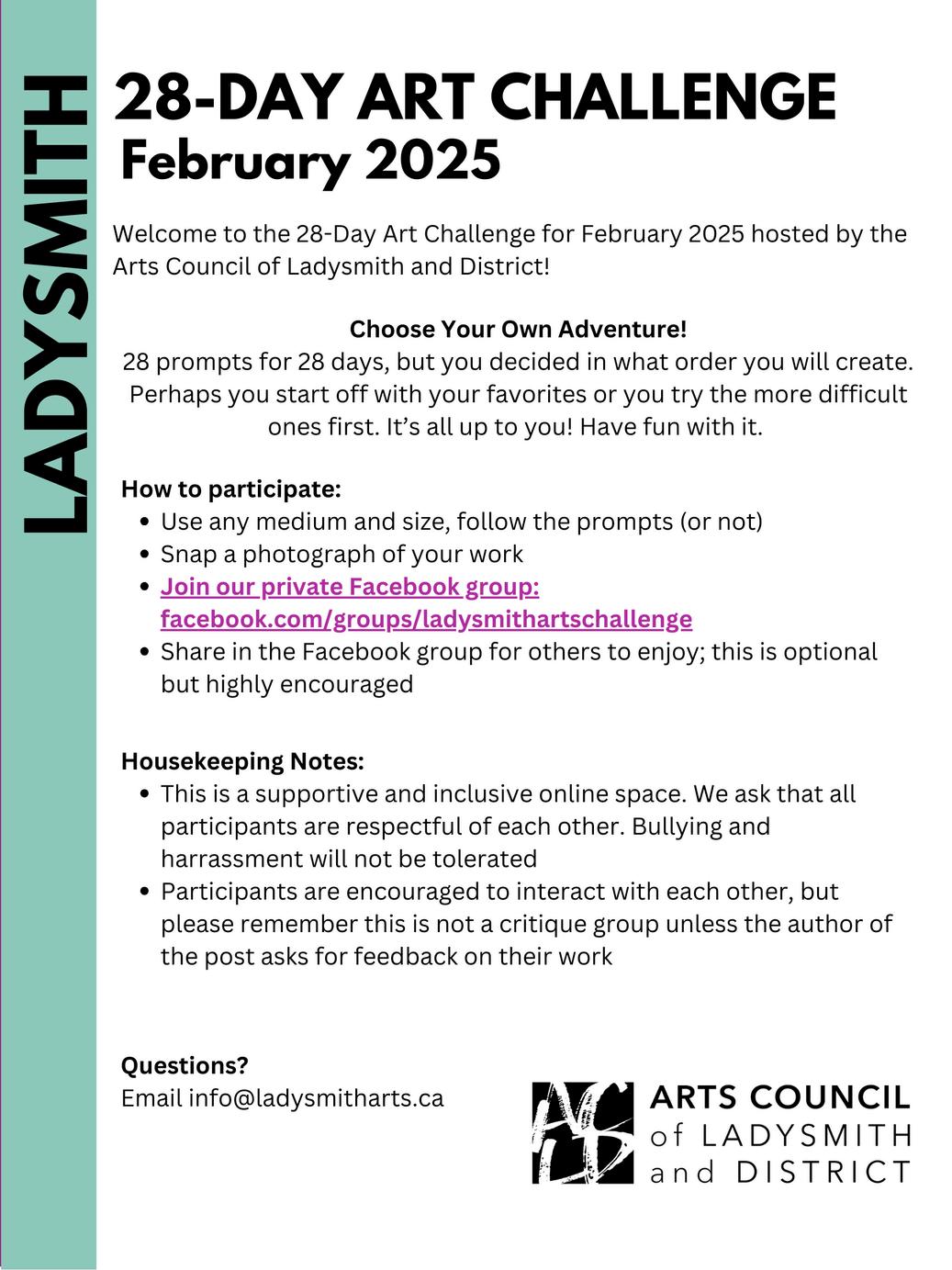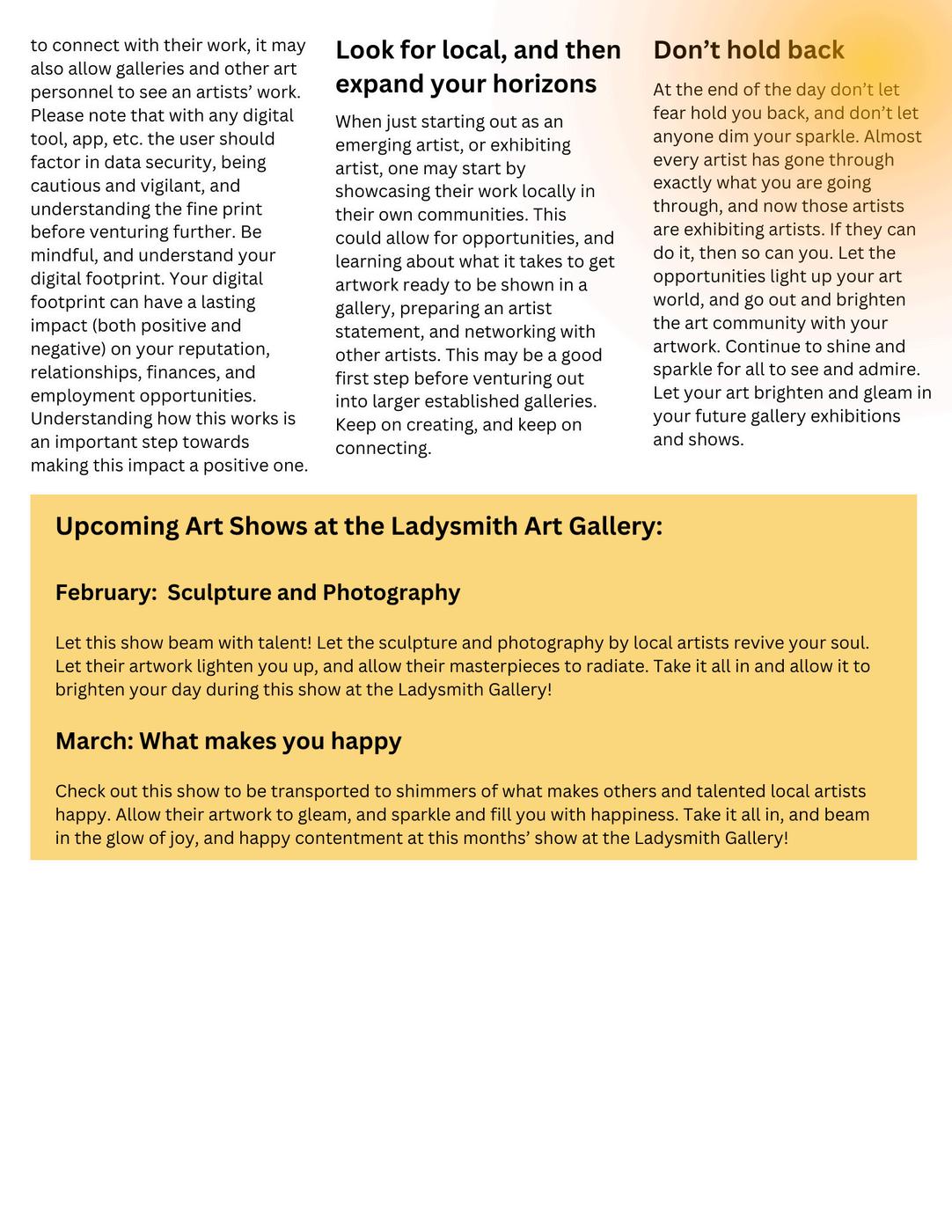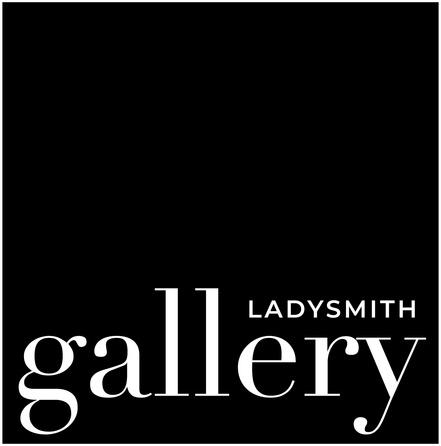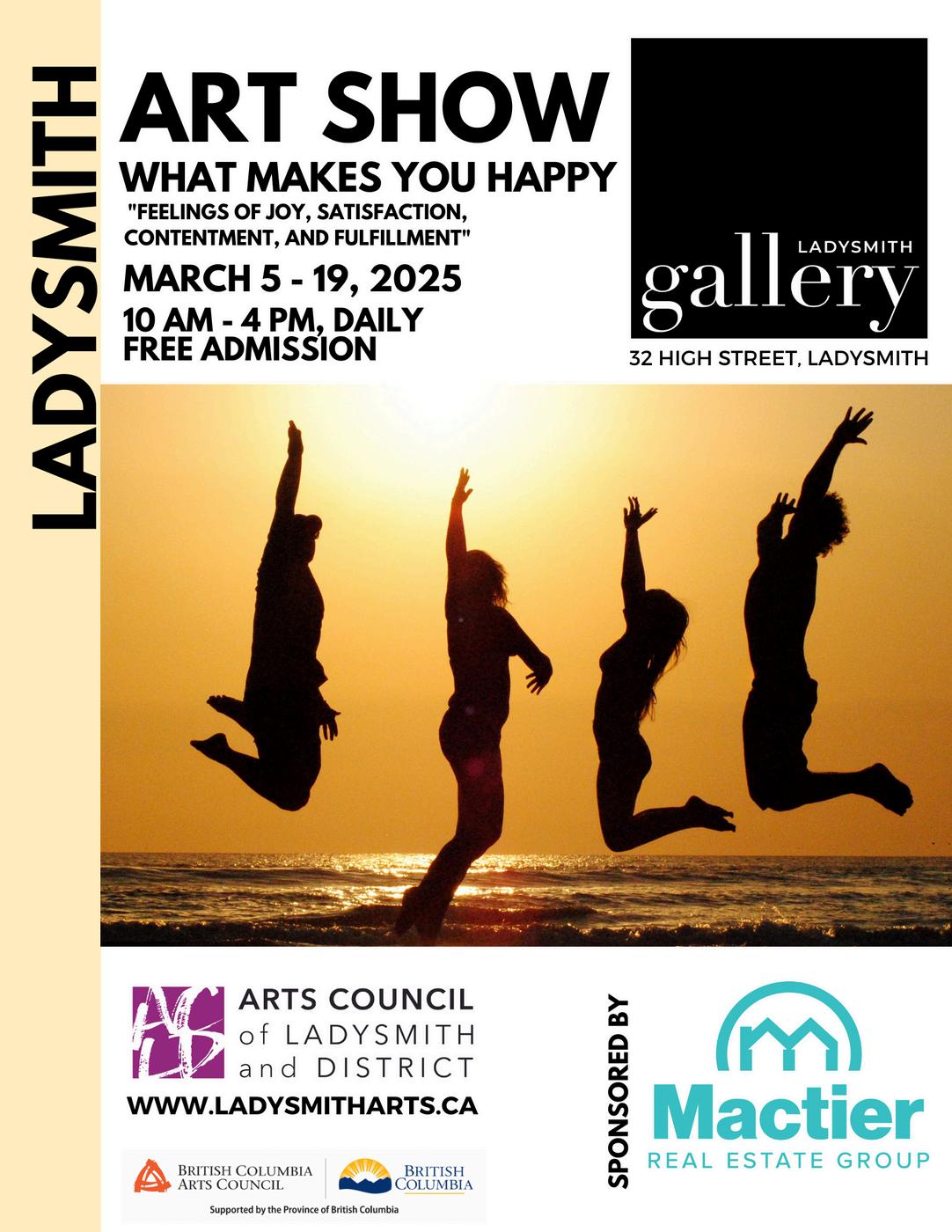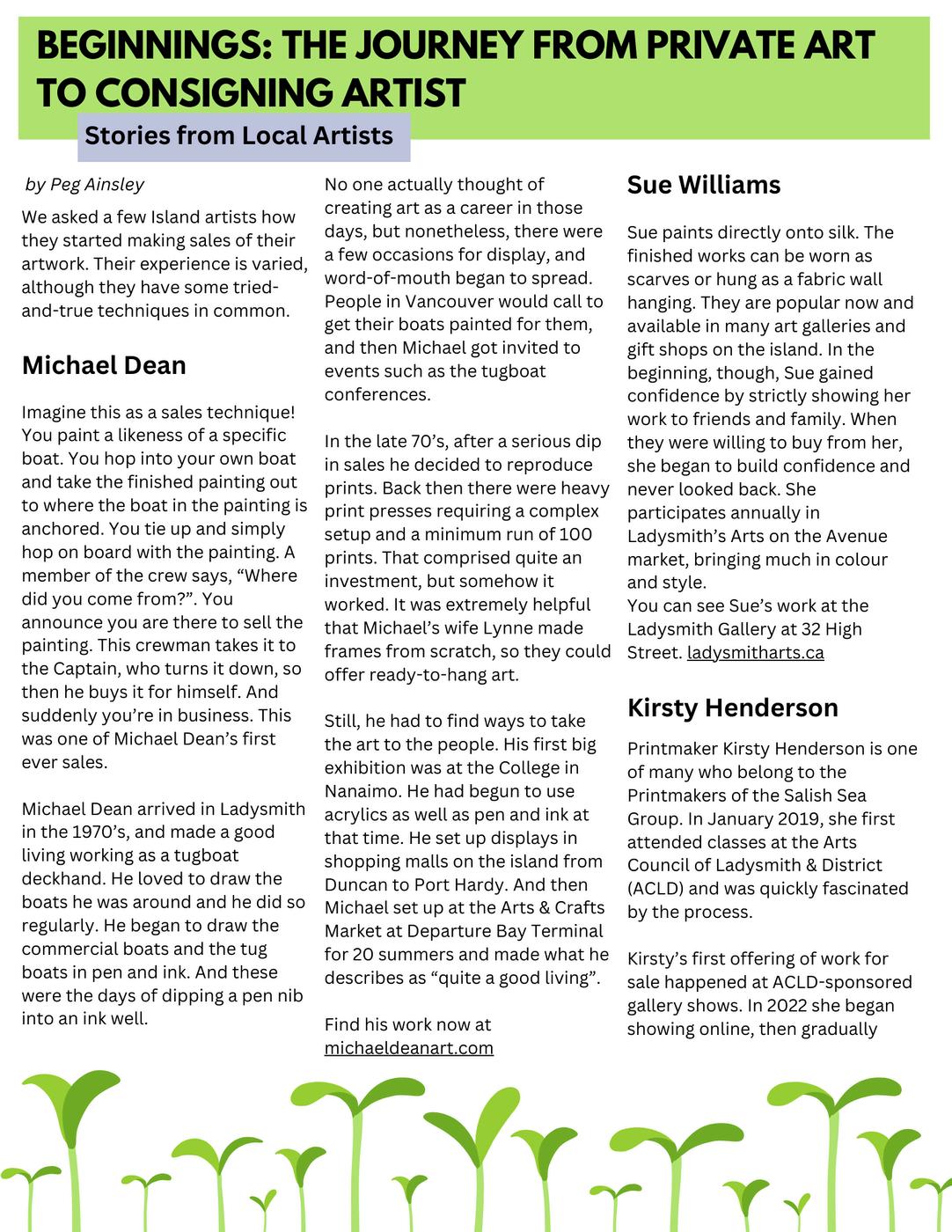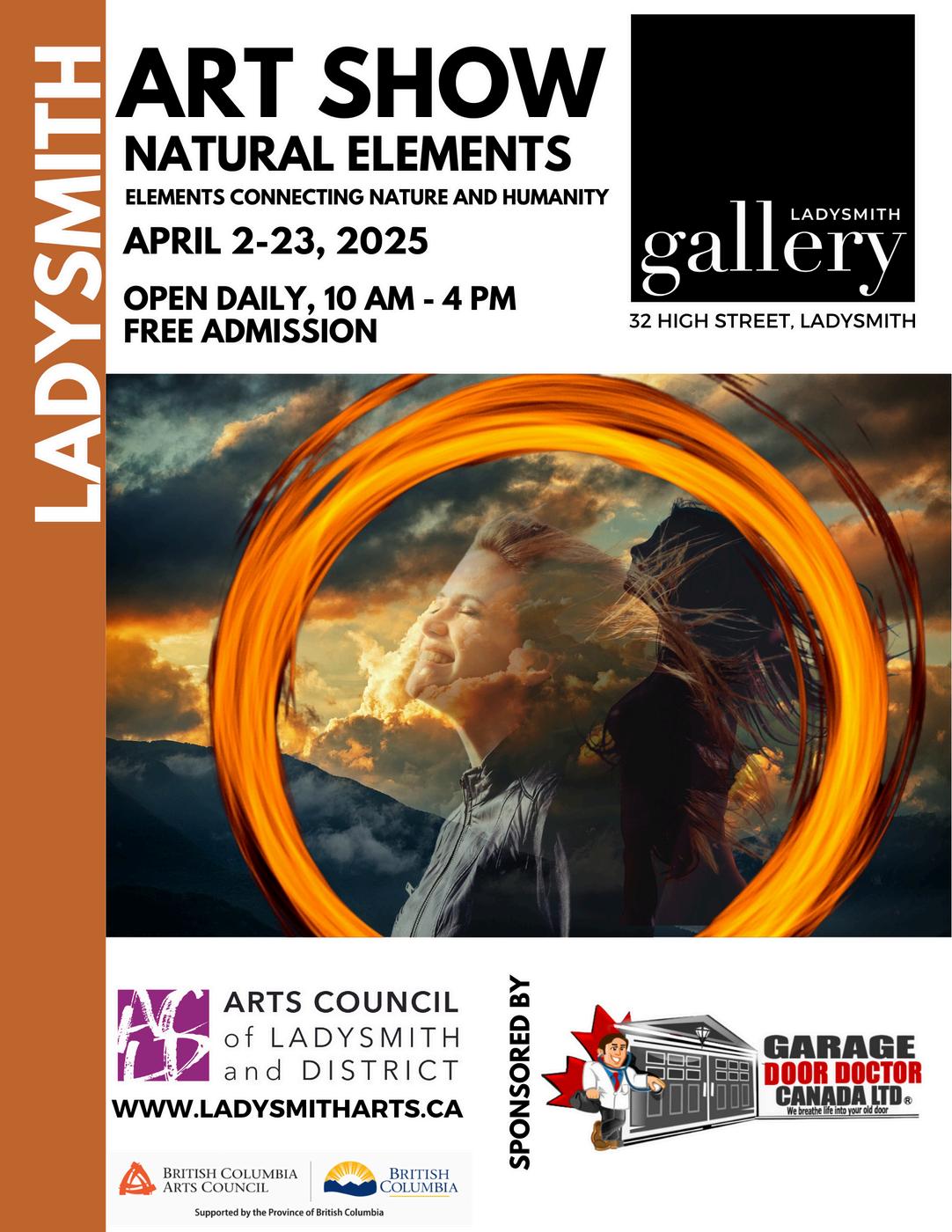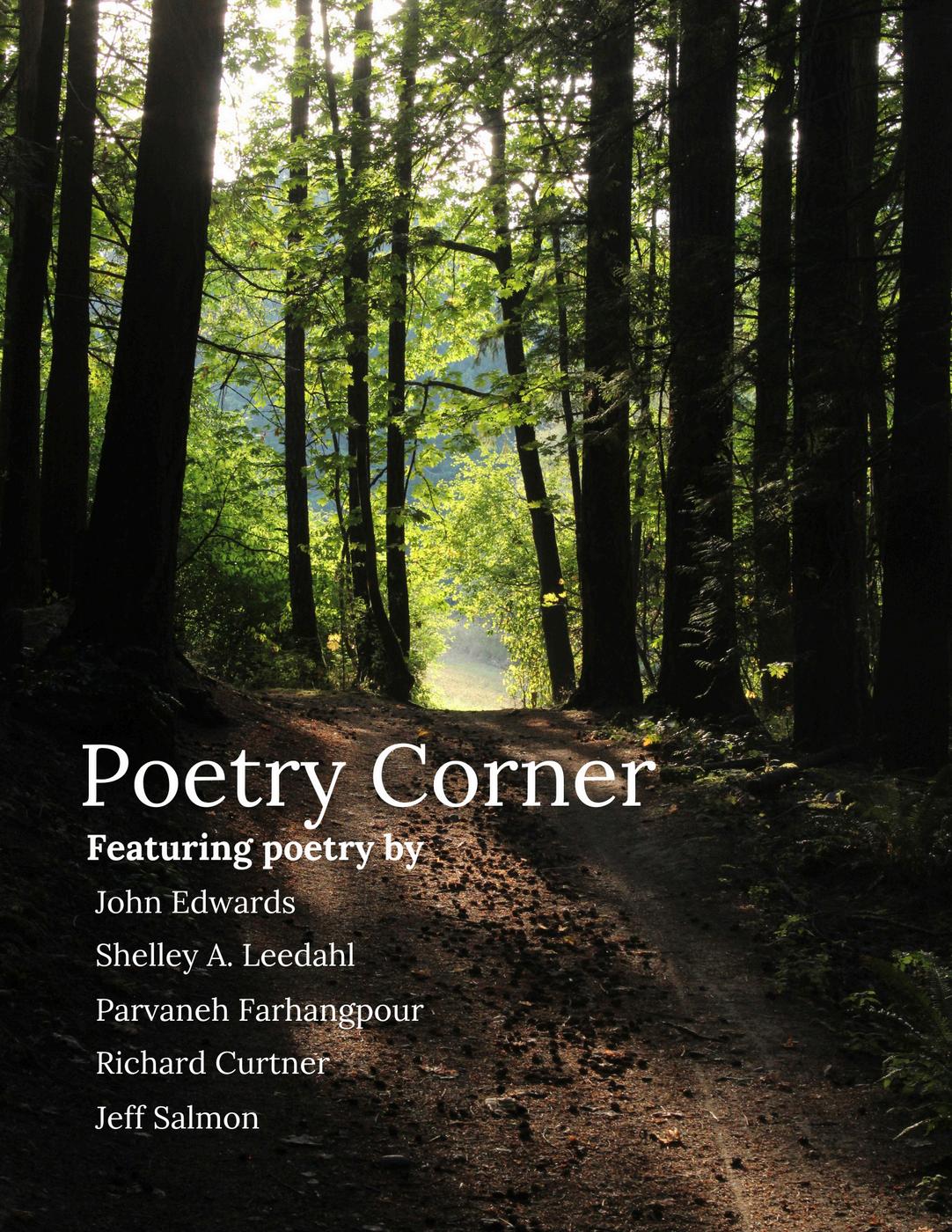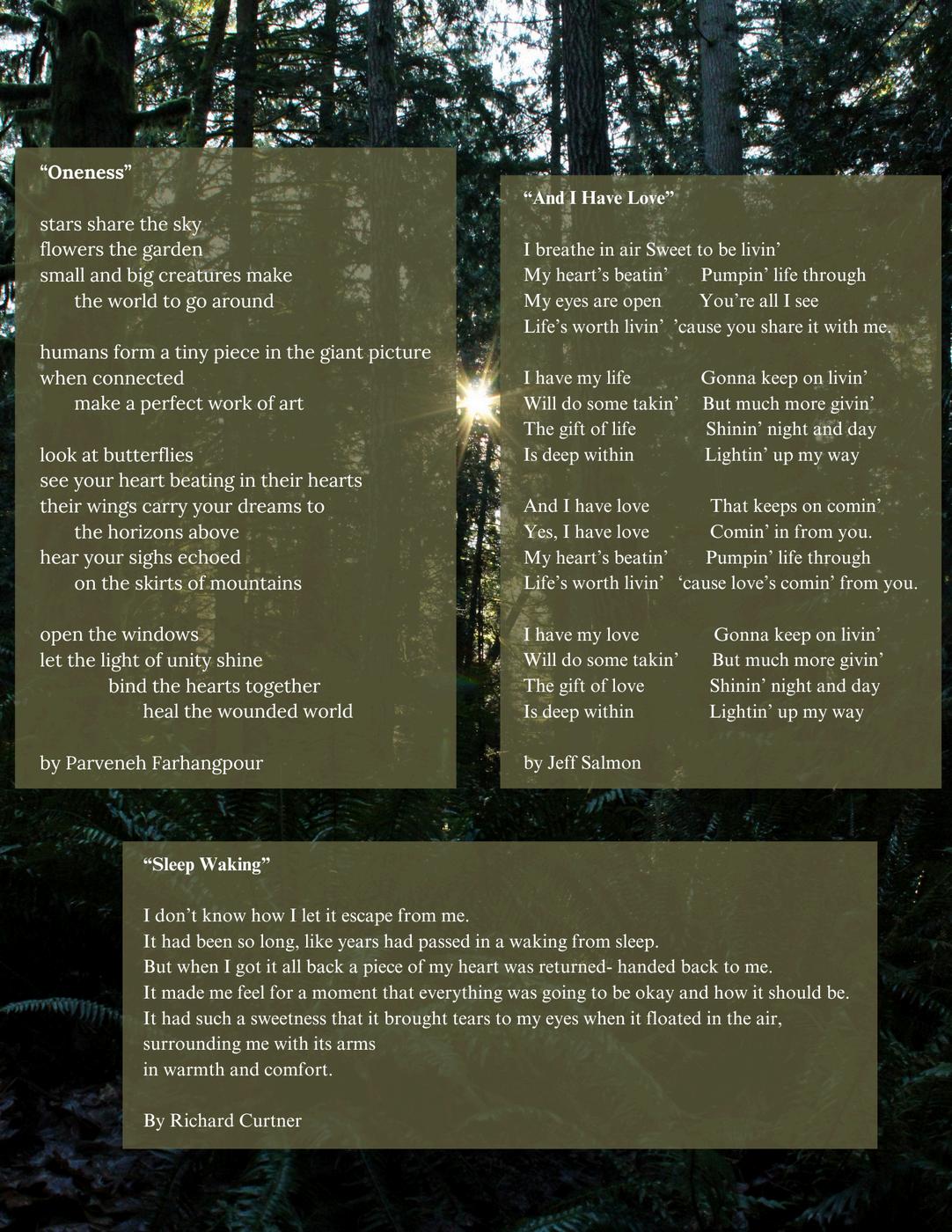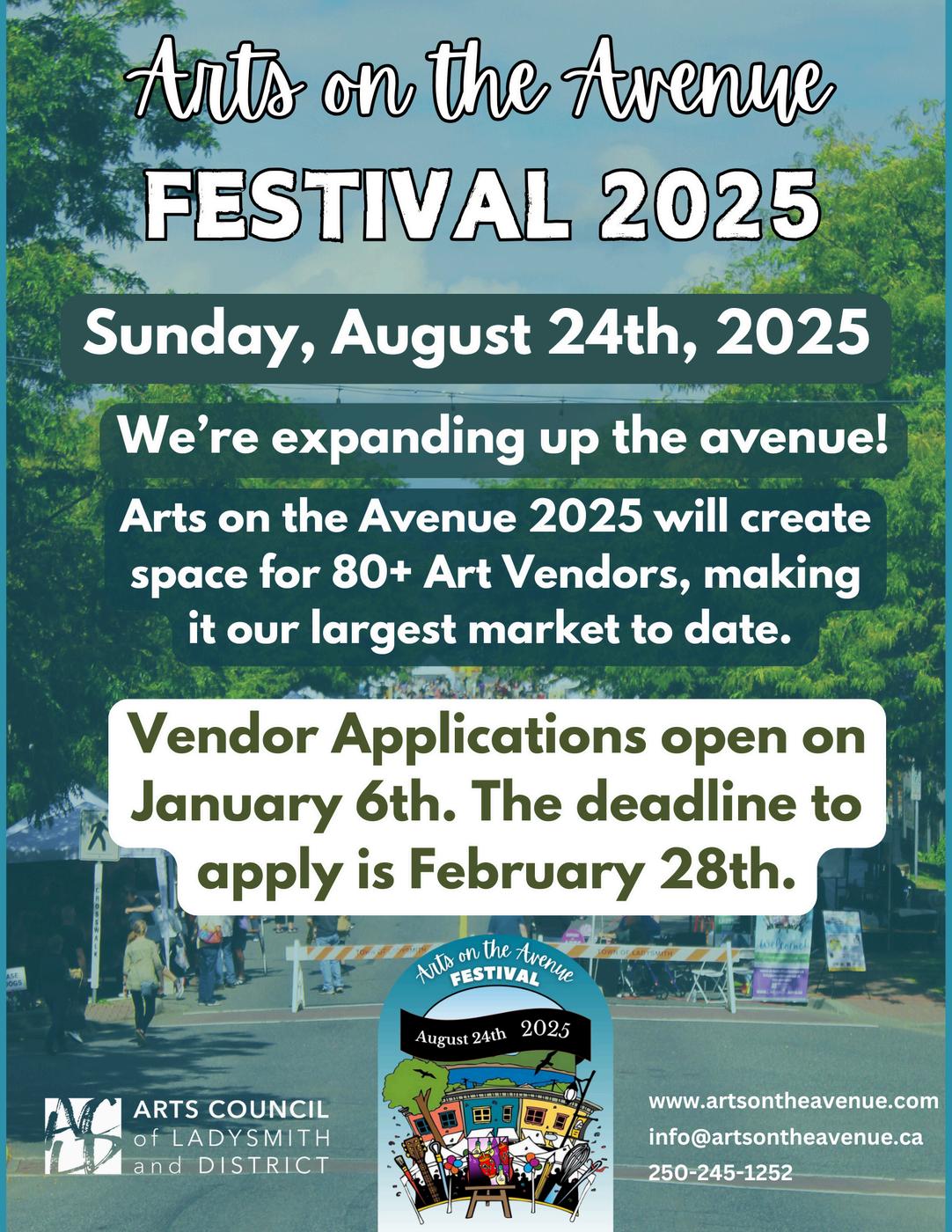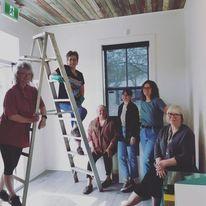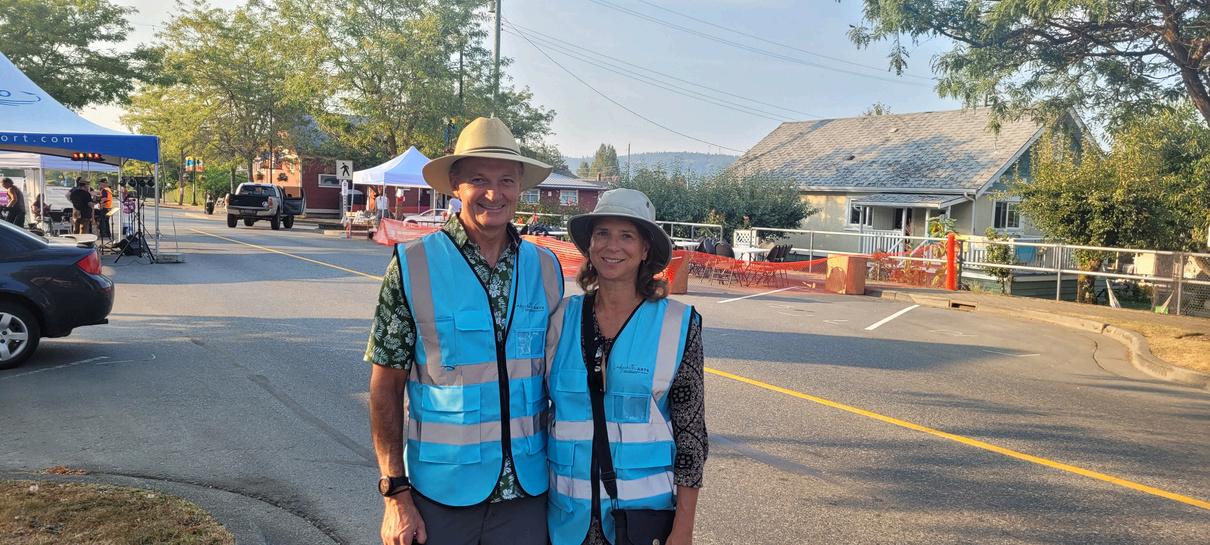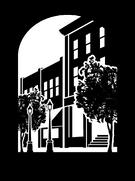ART MAGAZINE
January - April 2025












January - April 2025











by Adriene Jameson
“Have you ever slipped into a trance? I did. Almost a year ago today, while gazing into an old black and white photograph...”
I listened to Ruby Smith Díaz speak these words, clear-voiced and measured, taking me into the past into a world I thought I knew, but probably only knew through legend and hearsay. This is the beginning of “Soliloquy for Serafim,” a soundscape recorded as part of an installation commemorating Serafim “Joe” Fortes at English Bay.
I was introduced to Ruby by one of her neighbours, who encouraged me to get to know her and find out more about her latest project, a book called Searching for Serafim, which is due out for publication in January 2025 I was geared up to sit down and learn more about an author, but as it is with every human you meet, there is much more to Ruby than I first expected
Whenever I meet someone who writes anything in longform, the first thing I always want to know is, “What made you want to write this book?” The answer rarely starts with the idea of writing anything like a book, and it was no different for Ruby
It started out as a project as part of her residency at the Contemporary Art Gallery of Vancouver, where artists were invited to reflect on what has happened that made significant contributions to Vancouver This sparked Ruby’s interest in Vancouver’s Black history, as she herself is Afro-Latino. “As an artist, I am inspired by decolonial history. I’m always curious about
what the land is that I am on, and what it has held and continues to hold for Indigenous people What was this place originally named? What relationship do people have to this land here? There are so many layers that are yet to be daylighted ”
As part of a Black History Month Art Challenge, she chose to colourize an old black and white photograph from the Vancouver Archives, a photograph of Serafim “Joe” Fortes, standing in front of his tent on English Bay. He is lauded as Vancouver’s first lifeguard, and became locally famous for saving the lives of swimmers at the beach Ruby was drawn in by the photograph immediately, and began to wonder what life was like for a Black Trinidadian man in 1900s Vancouver, a time when people were pushing for a “white Canada ” She began to see gaps between how “Joe” was portrayed and what might have been the reality for someone of this background in this context

visual elements, and voices when I think about his story, and wanted to integrate it all ”
“Up until that point, I had never encountered in Vancouver history someone who was Afro-Latino,” Ruby says. “How was his experience like mine? How did you survive and navigate white supremacist 1907 riots in the streets, chants for “white Canada,” smashed storefronts. Chinese communities armed themselves to protect their families. And in many ways, we still see white supremacy alive today ”
It was from here that Ruby was inspired to create an audio output about Serafim as part of her residency “I didn’t want to have a monolog, or a flat audio piece I hear different elements of sound,
A major part of her project was the decision to refer to “Joe” by his given name at birth, Serafim She says in her soliloquy: “Limited primary sources mean that the majority articles that have been written about him are from the white settler gaze from the turn of the century. Therefore ‘Joe’ Fortes that we know today is vastly a creation of the white imagination.”
Ruby spent countless hours at Iyelshn (English Bay Beach), taking herself back in her mind to Serafim’s time. “[English Bay] was the winter camp for the Squamish Nation.” she says I spent time imagining what it would be like to be an Afro-Latino lifeguard 100 years ago, and also what it was like for the Squamish Nation, just across the water at Senáḵw, to be forced by gun point by the city of Vancouver to the north shore during Serafim’s lifetime While sitting there, I thought about who needed to be interviewed, talk to, and

what I needed to learn about Squamish history in order to tell Serafim’s story in a culturally responsible way.”
A photograph of the 2023 performance of “Soliloquy for Serafim” at English Bay Beach.
Ruby then went into a deep dive into the city archives, photographs and city newspapers to see what was being said about ethnicities in Vancouver She also read another biography about Serafim, Our Friend Joe, by Lisa Ann Smith Through this lens, Ruby could see that there were many gaps in Serafim’s story She knew that her project would be multilayered and circular, as many personal histories tend to be
This resulted in the creation of a fullon soundscape, that included the sound ofeagles, the beach, poetry, voices, Trinidadian sayings, and even Ruby’s father’s voice as Serafim.
I asked Ruby how her soundscape project evolved into a fully published book. She explained that the idea came through encouragement from her mentor, Wayde Comtpon. “He said to me, ‘You need to keep writing.’ And I laughed I thought, ‘Sure I’ll just keep writing, I guess I don’t have much to share ’ But I was so wrong! then I quickly came to realize that
as an Afro-Latina, there were many elements of his story and his life that hadn’t previously been considered by non Afro-Latine authors, and that there was a larger context around colonialism, and the specific ways it has impacted Indigenous and Black people living in Canada and beyond that people from [with other backgrounds] might not know It sparked more thought about the Transatlantic Slave trade, the displacement of Indigenous peoples all these elements that are rarely talked about but shape Canada’s history ”
Ruby described how something as simple as the interpretation of a piece of writing by people of different backgrounds can differ greatly. She described how an archivist at the Vancouver Archive
tried to make meaning of two samples of Serafim’s writing, which was written in a mixture of English and Spanish “What I see in those samples is a way of writing that is unique to someone learning two languages at the same time and having two world views collide, much like mine did at age seven From my background in both languages in a Chilean household and a Jamaican household, I was able to make different meaning [from what the archivist interpreted]. It gave me a glimpse into how Serafim’s upbringing, and how he made sense of the world as a bilingual person at the turn of the century.”
When Ruby pitched her manuscript to the publishers, she recognized that there had already been a biography written about Serafim, but emphasized how her perspective would be unique “I have yet to see an Afro-Latine person write about his story ” she says When that element is missing, we are missing huge portion of who he was ”
She describes it as a case of “not knowing what you don’t know ”
“There are things that non AfroLatine people aren’t going to wonder or imagine about. There were many points of connection that inspired me to write. I wondered if he missed roti, ackee, hibiscus tea, and empandas like I did. I didn’t want to write
Experience “Soliloquy for Serafim” by visiting the recording at The Vancouver Contemporary Art Gallery
Watch the 2023 performance on Instagram
Read more about Ruby’s Archival work: The Tyee
Discover more about Ruby Workshop: Still Here: Black Histories and Futures in BC Workshop
Pre-order Searching for Serafim: The Life and Legacy of Serafim “Joe” Fortes by visiting Arsenal Pulp Press
another biography I wanted to explore the nuances of the parts that were left out and speak to my own experience.”
Ruby wished that Serafim had been able to share his experiences using his own words, an opportunity that was not realized while he was still alive. “He was writing his own autobiography,” she says. “There is documentation of him being interviewed by Noel Robinson where he doesn’t tell Noel the whole story about one of his experiences He says, ‘I’m keeping that for my own book ’ That book was never found ”
This decision for the writing style of the book is reflected in her choice of the addition of poetry and speculative archiving “Sometimes there’s not enough language in just rote facts It leaves a space of imagining possibility, retrieving memory, challenging us in a way that other mediums can’t explore as effectively.”
Ruby describes herself as a person with a passion for learning local histories This inspired herto apply for Shadbolt Fellowship through Simon Fraser University where she wants to focus on the histories of black and Chinese people in Ladysmith in the turn of the history.
“I like to look at things in layers.” She says. “On the southernmost portion of First Avenue in Ladysmith, we see staircases that once were connected to homes right off the road that don’t appear to lead to anywhere anymore For me, it is such a metaphor for the erasure of Indigenous, Black, and racialized communities in this area Who lived at the base of these staircases? How did Stz’uminus nation people use this land before settlers arrived? Who were the Black and Chinese miners that arrived,

Cover art for Searching for Serafim, out for publication through Arsenault Pulp Press , January 2025
and how did their lives change when they were expelled by white people in Cranberry? What heartbreaks did they endure, and what brilliance did they bring to the community? Where do people call home, now? There is such limited content about Indigenous, Black, and racialized communities in the archives I would love to use the Fellowship as an opportunity to conduct interviews with historically marginalized communities in the area, and daylight their stories in a culturally sensitive way at the archives ”
Ruby also plans to extend this project into a portrait series to be shown in the local area.
Ruby also has plans to extend her journey with Serafim,
“I just applied for a grant to bring mya soundscape Soliloquy for Serafim, to life again, in the form of a site specific installation at Iyelshn at (English Bay Beach) with myself and Vancouver based actor, Carlos Costa When we did the installation in 2023, dozens
of people came to watch, and dozens more stopped dead in their paths, and joined the audience, completely mesmerized by our installation There’s something really powerful about being near the ocean, at a culturally significant place, and seeing people embody these characters. It truly transcends time ”
Ruby is an active mentor within the BIPOC community (Black, Indigenous and People of Colour) She was involved with ECW Press BIPOC Mentorship project for BIPOC writers in 2022, where she finalized her manuscript, for Searching for Serafim She is also about to begin her sixth iteration of her workshop: Still Here: Black Histories and Futures in BC, with a school in Victoria, in the Spring
Her mentorship also extends into her work as a Body Positive Trainer with Autonomy Fitness, which “welcomes and centers the participation of Indigenous people, Black people, People of colour, queer fam, gender binary breakers, radicals, and beyond- in any shape and at every size.”
We look forward to the publication of Ruby’s book and to seeing more of Ruby’s work in the community!
Searching for Serafim: The Life and Legacy of Serafim “Joe” Fortes will be out for publication in January 2025 through Arsenal Pulp Press

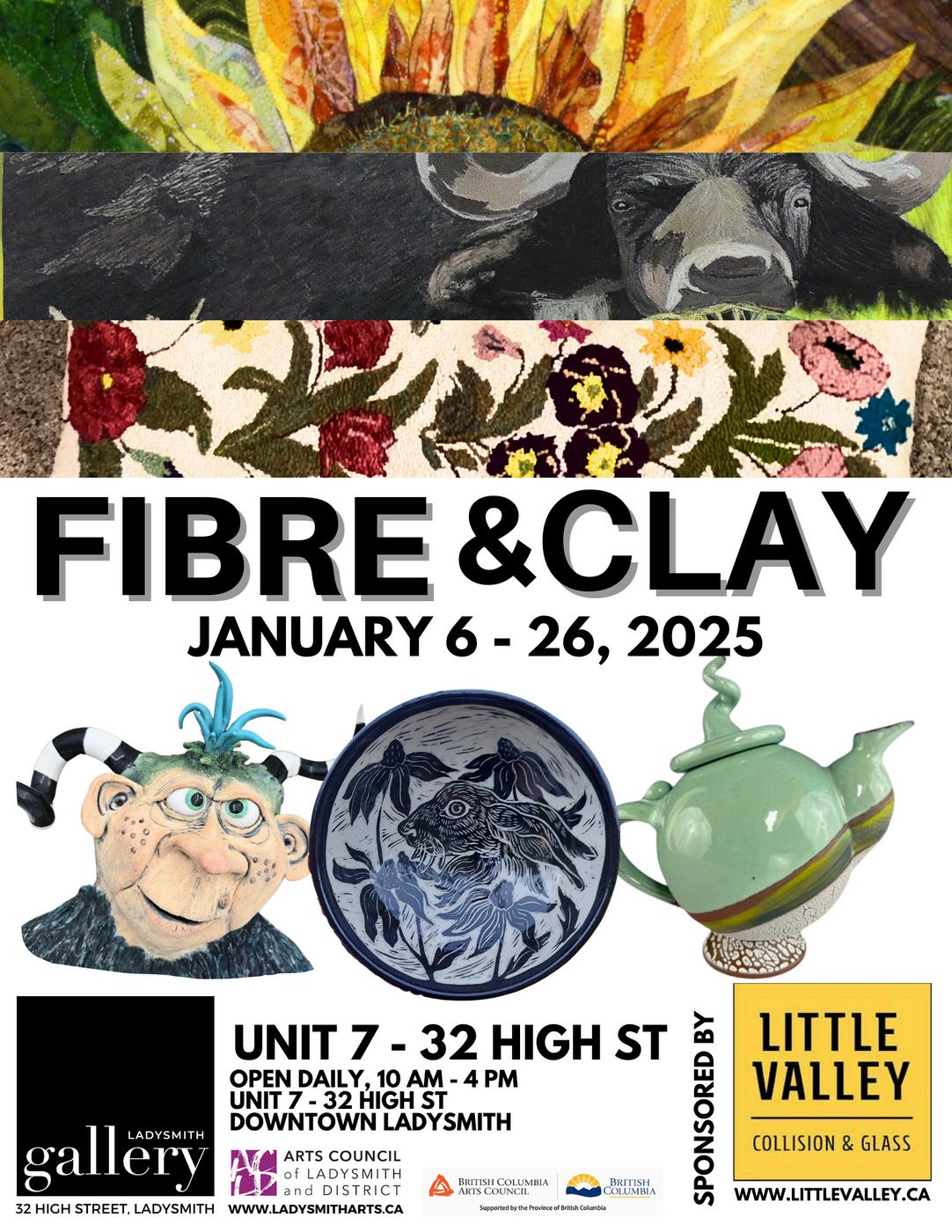
by John Edwards
Today Emily Carr is best known for her depictions of indigenous culture and the ecology of Vancouver Island and the north coast. Her works now fetch enormous sums at Heffel’s Fine Art Auction in Toronto. Just this month a painting titled “Masset”, oil on canvas, was found literally hanging in a New England barn, bought for $50, and then sold for $350,000.
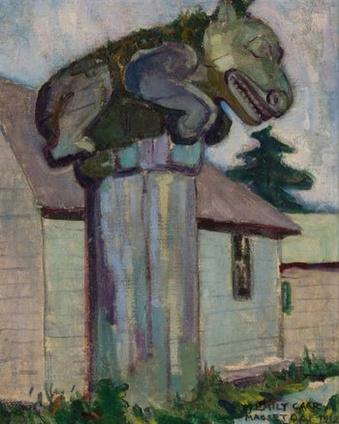
But the sad fact is that, in her lifetime, Carr often couldn’t even afford the price of canvas and thus many of her works are listed as “oil on paper”. Thus they wouldn’t even pass the requirements for entry into our present Ladysmith Gallery. In other ways too Emily Carr was an iconoclast She was born and died in Victoria’s James Bay and was regarded by the stuffy citizens as eccentric. While attending Oak Bay High I once met an elderly lady who recalled with laughter the sight of her pushing a pram down Government Street with her pet monkey on board. But as a young woman she was brave enough to sail to California to study at the rather eccentric San Francisco School of Art. “Masset, Q.C.I” by Emily Carr.
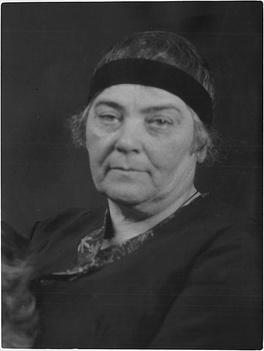
There as a woman educated in the typically puritan school system back in British Columbia she had to adjust to the exigencies of Life Class, described in her autobiography, Growing Pains, as “the difference between nude and naked” (page 39). After three years there she continued her artistic education in England and then France where the impressionists were changing expectations of the nature of art. Thus her oeuvre contains elements of postimpressionism and cubism in her earlier works and the influence of the Group Of Seven, and in particular her mentor and friend Lauren Harris, appears later. But always, she resisted undue aesthetic domination by others, and her style remains unique and individualistic. Like any genius of paint and words she could borrow technique and ideas only to transform them and make them part of her own creativity.

in my opinion, a lonely person who had to deal with the indifference of her peers regarding her life’s calling, at least until her final years. Every artist who has had a show in which nobody bought a painting will understand. Here she reveals her dilemma in Hundreds And Thousands (page108):
Oh, if there was only a really kindred spirit to share it with, that we might keep each other warm in spirit, keep step and tramp uphill together...all the artists there in Paris, like all the artists in the East, jogging along, discussing, condemning, adoring, fighting, struggling, enthusing, seeking together, jostling with each other, instead of solitude, no shelter, exposed to all the “winds” like a lone old tree with no others round to strengthen it against the buffets with no waving branches to help keep time.
To me, her later works are a precise pictorial representation of these words. In “Edge Of The Forest” and the iconic “Scorned As Timber, Beloved Of The Sky”. Lonely, misunderstood, and utterly brilliant.
Thus Emily Carr’s paintings are both biographical and historical: an account in oil on paper and canvas of the changes she saw wrought in her lifetime upon the indigenous peoples of the coast and the effects of industrial logging upon the ecology; processes which continue without remission eighty years after her passing.
It is her emotional identification with these subjects of her art which imbues them with timeless meaning and beauty. And in spite of the abuse she received as an artistic “outsider” from so many during her lifetime Emily Carr’s paintings are now held in enormous aesthetic (and financial) regard although, like so many others saddled with the burden of creative genius, she did not get to enjoy the due rewards of her devotion and labour.
